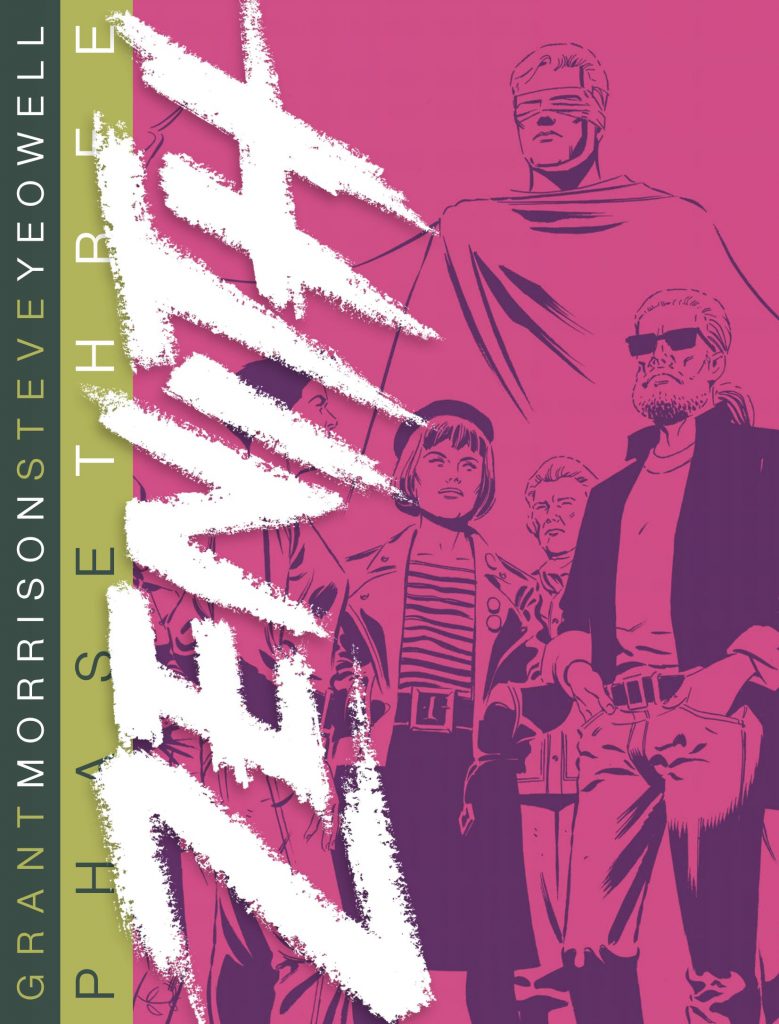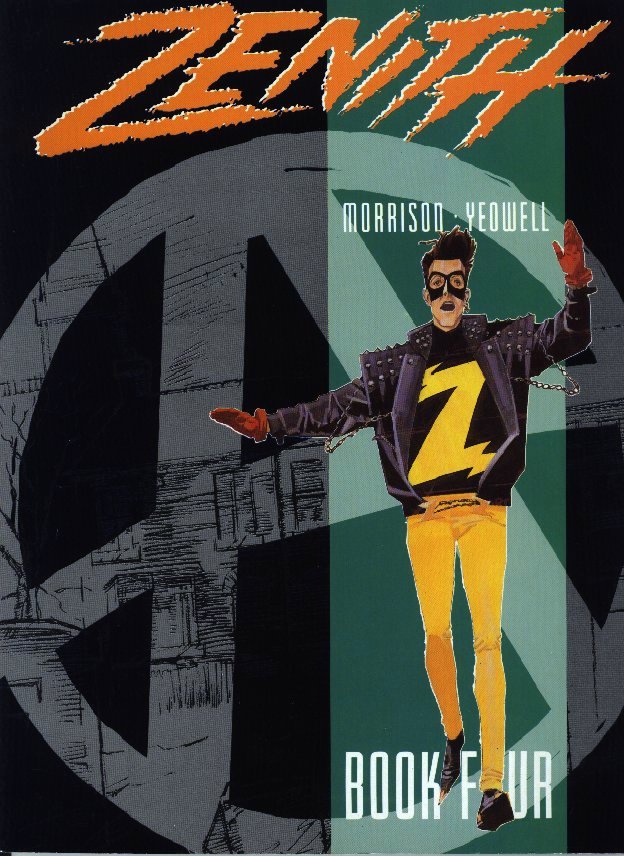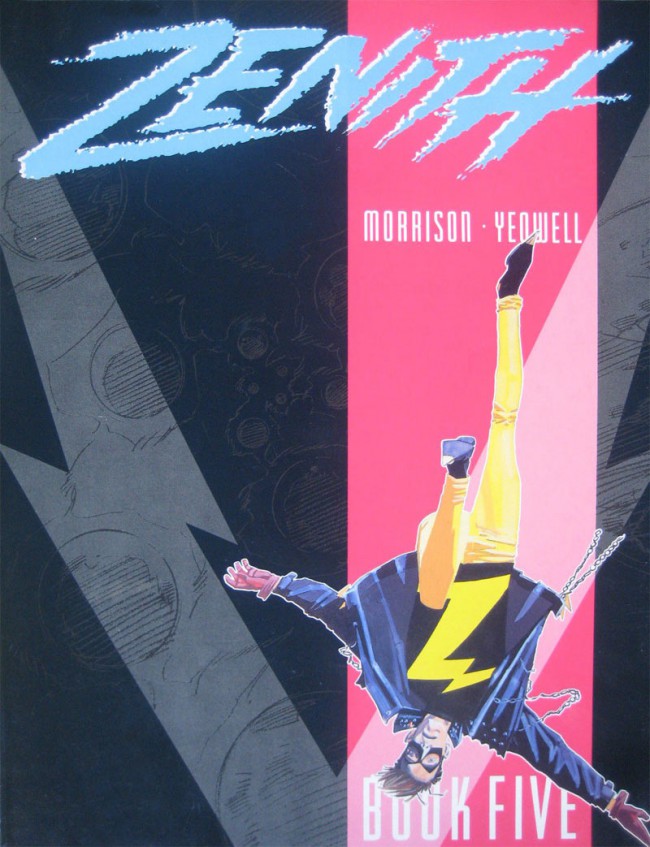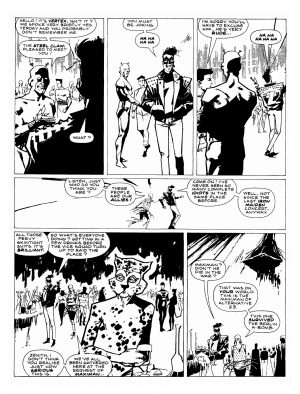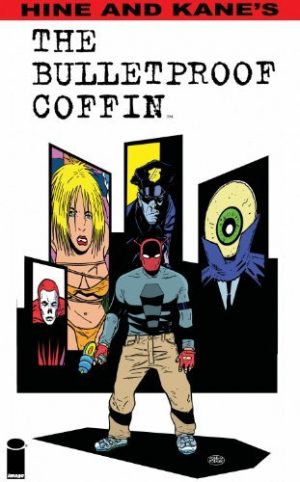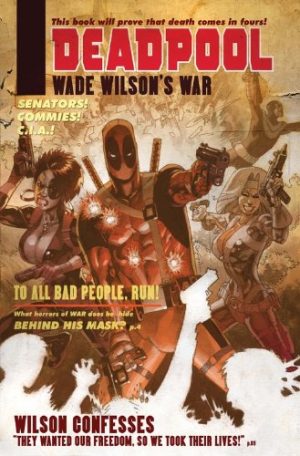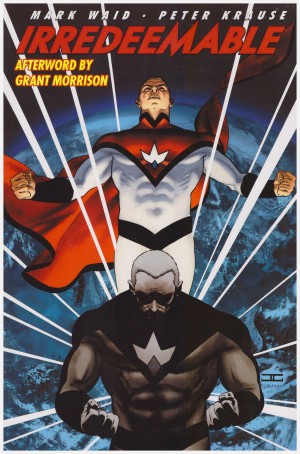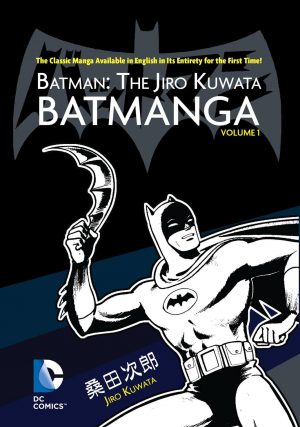Review by Ian Keogh
Grant Morrison opens Zenith Phase Three with the terrifying fate of a couple of characters who’ll be familiar to any British kid who read comics in the 1960s and 1970s, and along the way introduces the Multiversity concept he’d bring to DC twenty years later. The idea had previously seen service in Captain Britain, but Morrison twisted the idea to include recognisable characters from other British comics. Early on Zenith meets a blissed out Robot Archie, and the sample of Steve Yeowell’s art shows Zenith’s reaction to some others. However, via Zenith’s comments Morrison seems to have contempt for most of his childhood comic reading, although he also includes an alternative Zenith for a minimum of balance.
The beauty of alternate Earths is that Maximan, who died in Phase One, is now available again, but in a more disassociated form as spotlighted in a great rambling chapter. As hinted at in Phase Two, a threat is simultaneously targeting all realities, the Lloigor, Lovecraftian-style monsters determined to eradicate all life, but their preferred method is via possession of superheroes. It means Zenith and assorted others having to wipe out infested worlds. Morrison brings home the terrible cost of this, and having been so acerbic about old British comic characters he restores the dignity to some.
However, Phase Three is a troublesome outing. Morrison strives for the epic, but instead loses focus, and there’s a significant saggy middle section, although it may not have seemed that way when serialised in weekly instalments. Collected, though, the thrill of seeing the icons of old boys’ comics going at each other is brief, and readers who don’t know them miss out on that thrill. It doesn’t play to Yeowell’s strengths either, his art being detailed when it comes to people, but too many of them float on white backgrounds with the occasional rectangle of letratone. A lot of the references are either old heroes, or pokes at people known in 1989, and irrelevant now, so many of them that Zenith needs to be annotated for anyone under fifty: Beadle, Jeremy (1948-2008) – cackling TV prankster and puzzle/quiz compiler.
There’s a big reveal two-thirds of the way through, and from there the story picks up as the focus changes, and having thrown in several large explosive moments, Morrison’s ending is nicely understated, if including a joke not as acceptable now as in 1989.
An interlude piece ends the collection, a psychedelic trip into the beyond illustrated by Jim McCarthy. There’s a smart transition from black and white to colour, and while McCarthy’s not as good an artist as Yeowell, this works surprisingly well in saying what it needs to say in a minimal amount of pages. As such, it’s an unintended contrast to the main story.
Zenith Phase Three was previously issued in paperback split over Zenith Book Four and Zenith Book Five, the halfway point being Chapter 13. Phase Four concludes the series.
